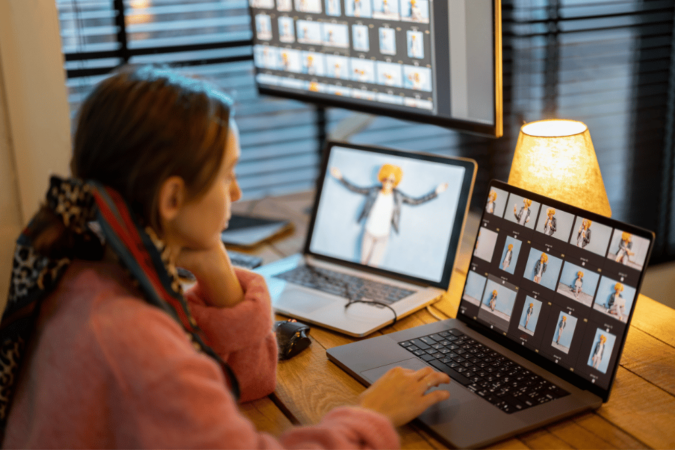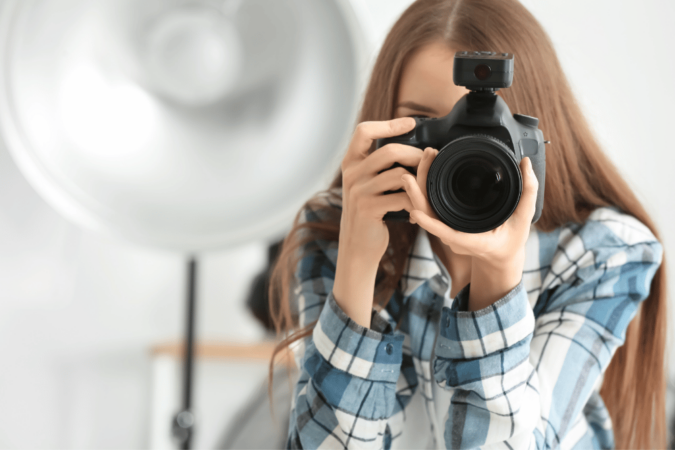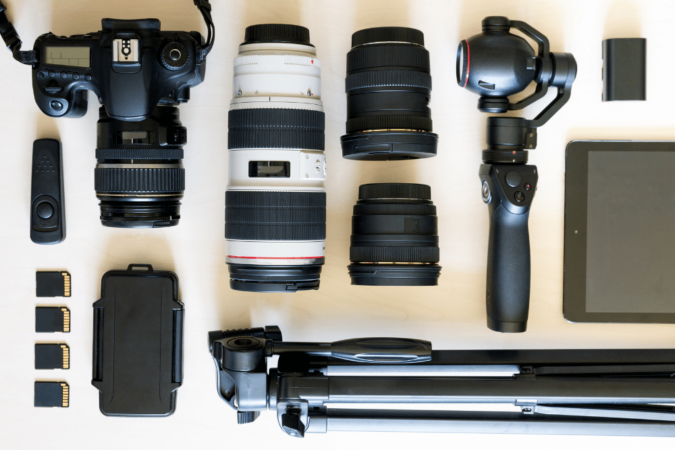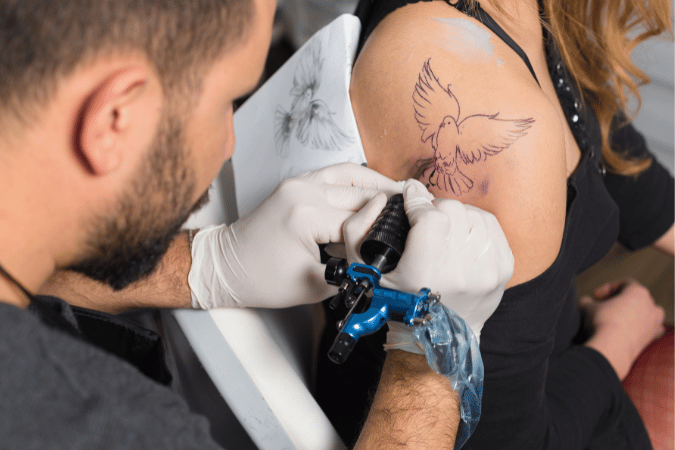
Building a Successful Freelance Photography Career

Are you an aspiring photographer who seeks to create a successful freelance photography business? Are you tired of the nine-to-five grind and want to transition into setting up your own business? Establishing yourself in the world of freelancing can be intimidating, but it doesn’t have to be! This guide will provide advice and tips on becoming a successful freelance photographer. From setting realistic goals for yourself and growing your portfolio to marketing yourself confidently and finding reliable clients, this extensive guide will cover all bases to stand out from the competition, maximize profitability and make working independently worthwhile.
What is a Freelance Photographer?
A freelance photographer works independently to take photographs for paying clients. This type of photography differs from traditional media or press photographers in that a client or organization usually contracts it, and the photographer typically works on their schedule. As such, freelance photographers can take on a variety of projects and can specialize in different areas, such as portraiture, wedding photography, product photography, nature/landscape photography, or any other area of specialization.
What Skills Do Freelance Photographers Need?

To be successful as a freelance photographer, there are specific skills you must have. Some of them are:
1. Technical Knowledge:
A freelance photographer should have a solid technical understanding of photography, including using the camera’s settings, lighting techniques, and composition. They must also be comfortable with editing software such as Adobe Photoshop and Lightroom to enhance their images.
2. Creative Vision:
Creativity is essential for any professional photographer, as it helps them to capture unique images that stand out. Freelance photographers must be able to look for inspiring and unusual perspectives to create beautiful photos.
3. Business Acumen:
As a freelancer, photographers must be able to market their services and attract new clients. They should also understand essential financial management, such as setting prices, managing expenses, and filing taxes.
4. Communication Skills:
Photographers must communicate effectively with their clients to understand their needs and fulfill them to the best of their ability. They should also be able to discuss the technical aspects of photography with potential customers and give advice when needed.
5. Attention to Detail:
Photographers must be meticulous in their work, paying close attention to detail when framing a shot and editing images. They should also be able to spot any mistakes or inconsistencies in the final product.
6. Time Management:
Freelance photographers often have multiple projects and clients they are working on at once, so they must manage their time wisely to meet deadlines and deliver high-quality results.
7. Adaptability:
Photographers should be open to learning new techniques and exploring different areas of photography, as this will help them stay up-to-date with the latest trends in the industry. They also need to be flexible and adapt quickly to any changes in the project or unexpected situations.
8. Networking:
To get new clients and opportunities, freelance photographers should be comfortable networking with other professionals. This includes attending industry events, joining online forums and social media groups, and building relationships with local photographers. By doing so, they will gain valuable insights into the industry, learn from the experiences of others, and find potential customers.
9. Self-confidence:
Photographers should possess a great deal of confidence in their work and be able to present their portfolio with pride. This will help them stand out from the competition and have more success as a freelancer.
10. Patience:
Working as a professional freelance photographer requires patience and persistence, as it may take time to establish a business and build a client base. This can include long days spent shooting or editing photos and dealing with demanding clients. However, if they stay determined and strive for better results, the rewards will be worth it.
These are just some of the skills that freelance photographers need to succeed. If a person can demonstrate these qualities and has a good understanding of photography, they will have the potential to become a successful freelancer.
How to Become a Freelance Photographer: A Step-by-Step Guide
Are you passionate about photography? Have you ever dreamed of making a career out of it and becoming a freelance photographer? If so, this step-by-step guide is just what you need to become a freelance photographer! Below we have outlined all the essential steps to becoming a freelance photographer. So let’s get started.
1. Develop Your Skills as a Photographer
The first step to becoming a successful freelance photographer is to hone your photography skills. Ensure you understand photography’s fundamentals, such as shutter speed, aperture, ISO settings, and composition. You should also practice and refine your technique to consistently produce high-quality images.
2. Build Your Portfolio
Your portfolio is your most important asset as a professional freelance photographer. Before looking for clients, invest time and effort into creating a portfolio that features your best work. Ensure you include images from various genres so potential clients can get an idea of the range of photos you can produce.
3. Promote Yourself Online
Once you have a portfolio ready, promote yourself online by creating a website and social media accounts to showcase your work. Focus on building relationships with potential clients by engaging in conversations via comments, likes, and shares. Also, consider joining photography-related forums or groups to network with other photographers and potential clients.
4. Research Clients and Pricing
Before you start taking on freelance photography assignments, research to understand what types of clients you want to work with and the going rate for your services. This will help you determine which clients are worth pursuing and how much to charge them for your services.
5. Prepare for Assignments
When you’ve been hired for a freelance photography assignment, prepare adequately. This includes reading the client brief thoroughly to understand what they need and planning the shots you will take on the day of the shoot. It’s also a good idea to bring all the necessary equipment, such as lenses and tripods, to the shoot.
6. Deliver Quality Images
Once you’ve taken all the necessary photos, edit them thoroughly before delivering them to your client. This will ensure they are satisfied with the images and more likely to hire you for future assignments.
7. Maintain Professional Relationships
Finally, maintain professional relationships with your clients by responding to their queries promptly and being flexible when needed. This will help you build a good reputation as a reliable freelancer and make it easier for you to get more assignments in the future.
With the right skills and determination, you can achieve your goals. Just remember to stay organized and keep up with the latest trends in photography to remain competitive in a crowded market.
Benefits of Starting a Freelance Photography Business

Starting a freelance photography business is an attractive option for many aspiring photographers. As a freelancer, you can work with clients in diverse industries and capture special moments that tell stories. You can also set your rates and hours, allowing you to build a career on your terms.
Additionally, freelancing often allows for more creativity, as you won’t be tied to the same corporate constraints. With so many benefits, it’s no wonder why many people pursue a freelance photography career. Below we will discuss some of the top advantages of starting a freelance photography business.
1. Low Start-up Cost
One benefit of starting a freelance photography business is the low start-up cost that comes with it. You don’t need to purchase expensive equipment or rent office space to get started. All you need is a decent camera, some essential lighting, and maybe a few other items to help you capture quality photos.
2. Flexible Schedule
Another great benefit of starting a freelance photography business is its flexible schedule. You can choose to take on as much or as little work as you want and set your own hours that fit into your lifestyle. This makes it easy for photographers to balance their personal lives with their professional ones.
3. Creative Control
Freelance photography allows you to take control of your creative vision and explore different styles, angles, and ideas that you may not otherwise get to do when working for someone else. It also allows you to specialize in a specific type of photography if desired.
4. Potential for Growth
Freelance photography is a great way to gain experience and build your freelance photography portfolio. As you take on more projects and develop your skills, you can potentially increase your rates and expand the services you offer.
5. Networking Opportunities
Freelance photography also offers the opportunity to network with other professionals in the industry. This can be beneficial for developing relationships with clients and other photographers and gaining insight into the industry.
6. Financial Rewards
Lastly, another big benefit of freelance photography is the financial rewards it can offer. Depending on your experience level and the quality of work you produce, you can make much money from freelance photography. Your rates can increase as you gain more experience and take on larger projects.
Starting a freelance photography business can be a great way to turn your passion into a profession and reap the rewards of having more control over your work life. With the right amount of dedication and determination, you can make it a successful venture that can help you achieve professional and financial success.
What Type of Services Can You Offer As A Freelance Photographer?
As a freelance photographer, you can offer various services to meet your clients’ needs. You may specialize in one specific genre or offer multiple photography services. Here are some popular photography services offered by freelance photographers:
1. Portrait Photography:
A great way to capture family portraits and headshots for business professionals.
2. Wedding Photography:
A popular choice for couples looking to preserve the memories of their special day.
3. Event Photography:
An ideal option for capturing corporate events, parties, and other occasions.
4. Product Photography:
A great way to showcase products from any industry in a professional manner.
5. Landscape Photography:
Perfect for nature lovers who want to show off their outdoor photography skills.
6. Real Estate Photography:
An essential service for realtors and property owners looking to market their properties in the best way possible.
7. Sports Photography:
A great option for capturing sports teams, athletes, or any other sporting activity.
8. Fine Art Photography:
An ideal choice for photographers who want to showcase their artistic talent.
These are just a few of the many services that freelance photographers can offer. With the right skills and equipment, you can provide great photography services to all types of clients in any industry. Whether you specialize in one specific genre or offer multiple services, you can be sure to provide excellent photography and customer service. With the right tools, you’ll be able to create memorable images that your clients will cherish for years to come.
What Does It Take To Be A Successful Freelance Photographer?

Freelance photography is a highly competitive and rewarding field, but it takes more than just talent to succeed. Here are some tips for becoming an in-demand freelance photographer:
1. Have a strong portfolio:
Having an eye-catching online photography portfolio with high-quality photos will make you stand out from the crowd and help you attract more clients.
2. Network:
It pays to have a wide network of contacts in the professional photography industry as this will help you secure more projects and business opportunities. Develop relationships with art directors, gallery owners, magazines, and photo editors.
3. Learn how to market yourself:
Learning how to package and promote your services can be as crucial as taking beautiful photos. Invest in building a website and use social media to promote your work.
4. Invest in quality equipment:
Having the right tools for the job is essential to produce high-quality images that will impress and stand out. Buy the best camera, lens, lighting, and editing software.
5. Stay up to date:
Staying current with the latest trends and photography techniques is key to staying relevant and competitive. Attend workshops, read books, watch tutorials, or take classes to stay ahead of the game.
6. Be organized:
Freelance photography requires excellent organizational skills so that you can manage deadlines and meet the needs of each client. Keep your calendar updated, make to-do lists, and set aside dedicated time for administrative tasks like invoicing and filing.
7. Develop a photography niche:
Many successful freelance photographers specialize in one particular area or genre of photography. Doing this will allow you to become an expert in that field, create a recognizable style, and eventually attract more clients.
By following these tips, you’ll be well on your way to becoming a successful freelance photographer.
How To Market Your Freelance Photography Business?
Marketing your freelance photography business is key to success. Here are 27 tips to help you get started:
1. Create a professional website.
Ensure your website is updated with your recent works and also include compelling descriptions of each work you have done. Your website should contain contact information, portfolio, and pricing information.
2. Join photography communities.
You can join a community like 500px, Flickr, or Instagram to showcase your work and increase exposure.
3. Invest in targeted digital advertising campaigns.
Consider advertising campaigns like Google AdWords.
4. Reach out.
Network with local businesses, magazines, and bloggers to collaborate on projects. Offer special discounts or free services to get people interested in what you do.
5. Network with other photographers.
Build relationships with potential photography clients by attending photography contests.
6. Develop branding.
Create business cards and brochures to hand out to potential photography clients.
7. Use word-of-mouth.
Take advantage of word-of-mouth marketing by asking your family and friends to spread the word about your photography business.
8. Start a blog.
Share photography tips, tutorials, and any useful information related to photography. This will help you create an online presence as well as attract new leads.
9. Create a portfolio.
Feature stock photography sites such as Shutterstock and iStockPhoto. This will help you reach a wider audience.
10. Build relationships.
Connect with wedding venues, event planners, restaurateurs, and other businesses needing your services.
11. Participate in local events and activities.
Be part of local fairs and craft shows to meet new potential customers.
12. Produce promotional materials.
Create videos and other content-rich media to generate interest in your services.
13. Utilize social media.
Use platforms such as Facebook, Twitter, and Instagram to reach potential customers.
14. Offer special deals.
Provide discounts and deals for your services on Craigslist or through daily deal sites.
15. Develop a referral program.
Encourage existing customers to spread the word about your services.
17. Sponsor.
Become a sponsor or participate in professional organizations like the Professional Photographers of America. This will increase visibility for your business and open doors to new opportunities.
18. Use promotional offers.
Offer discounts or free photo sessions to charities and other non-profits in exchange for a mention of your business.
19. Advertise.
Place ads in local newspapers, magazines, or online publications that are related to photography.
20. Facilitate workshops and speaking opportunities.
Consider conducting workshops and seminars to showcase your skills and knowledge and promote your services.
21. Start PR campaigns.
Send press releases about any new projects or initiatives you have taken. This will help to get media attention for your business.
22. Engage in industry forums and groups.
Participate in online forums and discussion groups related to photography, and post comments or answer other members’ questions. This will help you build credibility as a professional photographer.
23. Use SEM campaigns.
Utilize pay-per-click (PPC) campaigns on Google AdWords or other search engines to increase online visibility.
24. Partner with photographers.
Develop partnerships with other photographers or local businesses that you can refer clients to when you cannot fulfill their needs. This will create a network of contacts that could benefit your business.
25. Provide free consults.
Offer free consultations or mini photo sessions to incentivize people to sign up for your services.
26. Send out updates.
Create a newsletter and send out regular updates about new projects, discounts, and other news related to your business. This will help you stay connected with existing clients as well as attract new ones.
27. Network at local events.
Participate in local networking events such as small business expos and chamber of commerce meetings. This will help you connect with potential clients who may require your services.
What Kind Of Photography Equipment Do You Need To Get Started?

To get started as a freelance photographer, you will need certain equipment such as cameras, lenses, lighting kits, and other accessories. Having the right gear is an important step in launching your career as a professional photographer. With basic camera equipment along with knowledge of photography basics and some practice, you can build the foundation for becoming a highly successful freelancer. Let’s look at what kind of equipment you need to get started as a freelance photographer.
1. Camera:
The most important piece of equipment for any photographer is a good camera. A digital SLR (single lens reflex) camera allows you to take photos with a variety of lenses and settings, giving you the flexibility to capture different styles and types of images. Invest in the best quality that your budget allows and make sure it has all the features that you need for your work.
2. Lenses:
Invest in a few interchangeable lenses to give you more options when shooting so that you can achieve different effects. A good starter lens is a wide-angle lens, as it allows you to capture more of a scene in one frame, but zoom lenses are also very useful to have.
3. Tripod:
Invest in a good, sturdy tripod so that you can take clear and stable shots even when it’s windy or dark outside. This is especially important for long exposures and night photography.
4. Computer/Editing Software:
You’ll need a good computer with an editing program like Photoshop or Lightroom to edit your photos. This will help you create the best possible images and make them look professional.
5. Flash:
Invest in a good external flash to add more light and depth to your images, especially when shooting indoors or at night. It can also be used for creative effect shots like fill-flash, backlighting, and silhouettes.
6. Extra Batteries and Memory Cards:
Make sure you always have extra batteries and memory cards so that you don’t miss out on capturing important moments due to a lack of power or storage space. Keep at least two sets for each camera body, as well as several high-capacity memory cards.
7. Camera Bag:
Invest in a good quality camera bag that can fit all of your equipment and protect it from the elements. This will ensure that your gear is always safe and secure no matter where you go.
8. Filters:
Filters are very useful for enhancing photos and creating interesting special effects. A polarizing filter helps reduce glare, while a neutral density filter can help you capture long exposures during the day. UV filters are also great for protecting your lenses from dust and scratches.
9. Backgrounds:
Invest in some good quality backgrounds like paper and fabric to help create a professional look for your photos. A backdrop stand is also essential if you plan on shooting portraits or still lifes.
10. Accessories:
Carry accessories like lens and camera cleaning cloths, flash diffusers, extra batteries and memory cards, remotes, and flashes to help you get the most out of your equipment. They’ll also come in handy if something breaks or malfunctions during a shoot.
These are the basic pieces of equipment that you’ll need to get started as a freelance photographer. Invest in good quality gear and make sure you have everything on hand so that your shoots go as smoothly as possible.
How to Find Freelance Photography Jobs?
If you’re a photographer looking for work, there’s no better place to start than with freelance photography jobs. Freelancing gives you the flexibility to choose your projects and work on your terms. But if you don’t have the right resources at hand, it can be difficult to secure freelance gigs. Below are some tips and tricks on how to find freelance photography jobs that are both professionally rewarding and financially viable.
Where To Look For Freelance Photography Gigs?
The best place to start is by reaching out to your network of contacts. Chances are that one of your friends or family members knows someone who needs a freelance photographer or has an upcoming project in need of one. Don’t be afraid or embarrassed to ask around—you never know who might have a lead!
Another great way to find freelancing opportunities is by searching online job boards. These sites often contain listings for photography-related positions, so make sure you keep an eye out for those as well. You may also want to check out websites like Upwork and Fiverr, which connect freelancers with potential clients from all over the world. Finally, social media platforms such as Instagram and Twitter can also be invaluable resources when it comes time to hunt down new leads.
What To Consider When Accepting Freelance Jobs?
Once you’ve found some potential opportunities, you must take the time to evaluate them carefully before making any commitments. Make sure that the job description is clear and that it includes all the necessary details about what is expected of you (e.g., turnaround time, and payment structure). It’s also important that you feel comfortable with the client; after all, this person will become your employer for the duration of the project! Once all these boxes are checked off, then you can move forward confidently with accepting the gig.
FAQs
1. What type of jobs do freelance photographers take on?
Freelance photographers typically specialize in one or more areas, such as fashion photography, wedding photography, portrait photography, or food photography, and they might take on a variety of assignments including corporate events, editorial stories, and fashion magazine spreads.
2. What kind of qualifications do freelance photographers need?
Most freelance photographers have at least a basic knowledge of photography and may even possess formal qualifications such as a college degree or certificate in photography. Additionally, they must be able to demonstrate their portfolio of work to potential clients.
3. How much money can freelance photographers make?
Freelance photographers’ salaries vary depending on the type of work they do, their level of experience, and their location. Generally speaking, a freelance photographer can expect to earn between $30-100 an hour for basic photo shoots and up to several thousand dollars for more complex projects.
4. How can freelance photographers find work?
Freelance photographers can find jobs through networking, attending photography workshops or seminars, working with local publications and brands, and setting up a portfolio website that showcases their best images. Additionally, they may also consider joining an online platform such as Upwork or Fiverr to connect with potential clients.
5. What types of contracts do freelance photographers use?
Freelance photographers typically use written contracts to outline the scope of work, payment terms, intellectual property rights, and other important details related to the project. Depending on their client’s needs, they may also need to provide additional documents such as model releases or copyright agreements.
6. What rights do freelance photographers have?
Freelance photographers own the intellectual property rights to all images they create, which means they can decide who gets to use or reproduce the photos and under what terms. Additionally, they can set their rates for services, choose which projects to work on, and decide how their images are used.
7. What challenges do freelance photographers face?
Freelance photographers often face the challenge of finding steady work, as well as the pressure to produce high-quality images on tight deadlines. They must also be prepared for unexpected costs such as travel expenses or equipment rentals and can experience difficulty in setting fair prices for their services. Finally, they may have to compete with other photographers and navigate difficult client relationships.
Takeaways
So, there you have it – everything you need to know about what is a freelance photographer, what skills do they need, the process of becoming one, and the benefits that come with it. If this has inspired you to take the plunge into freelancing, check out our other blogs for more tips on getting started as a freelancer and marketing your new business. Good luck!




